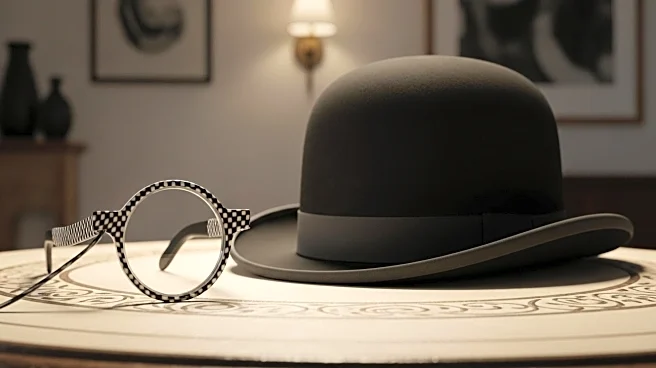Rapid Read • 8 min read
Cindy Sherman, a renowned photographer known for her transformative self-portraits, has been selected to create the cover for The New Yorker's centenary issue. This marks only the second time a photograph has been used for the magazine's cover, the first being in 2000. Sherman's cover features her in a profile view, adorned with a feathered hat, a striped sports jacket, and a false nose, holding a hand mirror instead of the traditional monocle associated with the character Eustace Tilley. This cover is part of a long tradition of artists reinterpreting Tilley, a character that first appeared on the magazine's cover in 1925. Sherman's involvement comes as she is also showcasing her work in an exhibition titled 'Cindy Sherman. The Women' at Hauser & Wirth Menorca, her first in Spain in over two decades.
AD
Sherman's contribution to The New Yorker's centenary issue highlights her significant influence in the art world, particularly in the realm of photography and self-portraiture. Her work often challenges traditional gender roles and critiques societal norms, making her an apt choice for a publication known for its cultural commentary. The use of her photograph for the cover underscores a shift in the magazine's approach to visual storytelling, embracing contemporary art forms. This collaboration also coincides with Sherman's efforts to preserve her artistic legacy through the Cindy Sherman Legacy Project, which aims to maintain the integrity of her work for future generations.
Following the release of the centenary issue, The New Yorker may continue to explore innovative collaborations with artists, potentially expanding the use of photography in its covers. For Sherman, her ongoing exhibition in Spain and the Cindy Sherman Legacy Project will likely continue to draw attention to her work and influence. The Legacy Project, in particular, may set a precedent for other artists seeking to preserve their work in the digital age, prompting discussions on the value and authenticity of art in contemporary society.
Sherman's reinterpretation of Eustace Tilley not only celebrates The New Yorker's history but also reflects broader cultural shifts in how identity and self-representation are perceived. Her choice to use a hand mirror instead of a monocle suggests introspection and self-examination, themes prevalent in her body of work. This cover could inspire further dialogue on the role of art in media and its power to challenge and redefine cultural icons.
AD
More Stories You Might Enjoy













